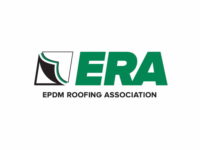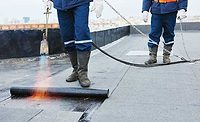As urban areas across the globe have grown in size and density, significant changes have taken place in their landscapes. Buildings, roads, parking lots and other infrastructure have replaced open land and vegetation. Surfaces that were once permeable and moist have become impermeable and dry. As a result, urban regions have become much warmer than their rural surroundings, forming a “heat island” of higher temperatures.
Elevated temperatures in urban heat islands, especially during the summer, may have numerous negative consequences for the environment and quality of life in urban areas. These adverse consequences include increased peak energy consumption, higher risk of brownouts/blackouts, adverse health consequences, and impaired air and water quality.
But just as elevated temperatures in urban heat islands pose numerous negative consequences, cool roof coatings offer an equally long list of benefits to improve the environment and quality of life in urban areas. Important benefits of cool roof coatings for cities and their inhabitants include:
Lower air temperatures. Simulations run for several cities in the United States suggest that citywide installations of highly reflective roofs and pavements, along with planting shade trees will, on average, reduce ambient air temperatures by 4 to 9 degrees Fahrenheit in summer months.
Reduced peak energy demand. By reducing air temperatures and the associated demand for air conditioning at critical peak periods during the day, the installation of reflective roofs and surfaces may reduce overall peak electricity demand in urban areas by as much as five to 10 percent.
Lower air pollution. The combination of lower overall temperature and reduced peak demand offered by reflective roofs and surfaces may lead to reduced air pollution by lowering the amount of power plant emissions and by reducing the temperature-related formation of smog.
Reduced risks from blackouts. By lowering peak electricity demand, reflective roofs may reduce the risk of power blackouts. And in the event a blackout does occur, reflective roofs continue to divert solar heat away from buildings and help occupants stay cool without the use of air conditioning.
Improved quality of life. Reductions in overall air temperature and urban air pollution combine to provide a healthier and a safer environment for a city’s inhabitants, leading to improvements in work productivity and leisure activity.
For the roofing contractor, perhaps the most noteworthy feature of cool roof coatings is that so many of the benefits accrue directly to the building owners who invest in them. Important benefits of cool roofs for building owners include:
Lower electric bills. Because many electric utilities, especially in urban areas, add peak demand charges to their electric bills, the dollar savings available from installing a reflective roof may be many times more than the actual reduction in peak usage. For example, a recent study of peak electric charges suggests that the costs associated with peak electricity demand charges may account for over 50 percent of some electric bills during the summer.
Reduced equipment sizing. Because air conditioning equipment must be sized to accommodate peak cooling loads, reflective roofs may help lower the overall size of the compressors and air handlers needed to cool a building.
Improved service life. Because reflective roofs may lower roof surface temperatures by as much as 50 to 60 degrees Fahrenheit, rooftop air conditioning units operate at reduced temperature differentials, which may extend the service life of equipment. In addition, the normal process of ultraviolet degradation of the underlying roof membrane is effectively stopped in its tracks.
If you’d like to learn more about the many features of cool roof coatings you can market to your customers, the Roof Coating Manufacturers Association maintains a top-notch web site dedicated to the benefits of cool roof coatings. Simply go to www.roofcoatings.org, select “Reflective Roof Coatings Institute” from the menu, and you’ll be directed to a comprehensive list of cool roof coating information. That includes specific benefits for every key roofing stakeholder, an FAQ of common cool roof coating questions, and even a state-by-state database of incentives and rebates available for installing cool roof coatings.





Report Abusive Comment